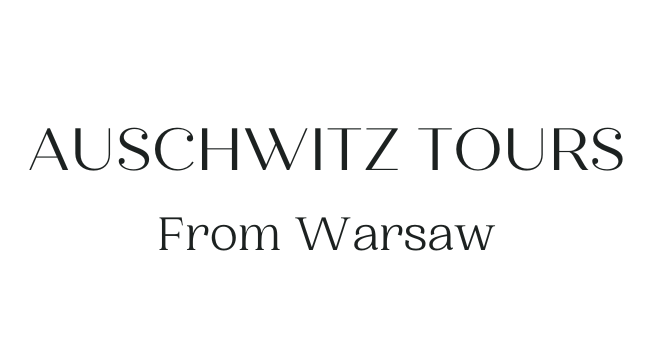Warsaw Old Town Travel Guide (2025 Edition)
Warsaw Old Town is where you’ll find the heart of the city. You’ll walk on stone lanes first laid centuries ago, pass walls rebuilt brick-for-brick after World War II, and see houses painted in bright pastels that make photos easy.
The whole district sits inside a handy loop: Royal Castle on one end, the Barbican on the other, with cafés and museums in between. It’s now a UNESCO site, not because it stayed intact, but because locals put it back together from scratch using sketches, memories, and a ton of grit.
It was completely rebuilt after WWII, and it’s one of the most impressive restorations in Europe. Needless to say, it’s must-see if you’re visiting Poland. In this guide, you’ll find everything you need: what to see, where to eat, how to get around old town Warsaw, and a few local tips to make your time here even better.

Warsaw Old Town – Overview
Let’s start this guide with some essentials you should when coming, such as the cost, how long to stay in Warsaw Old Town, the best time to visit, and more.
Is Warsaw Worth Visiting?
Yes, Warsaw is worth visiting. First, the city tells a strong story, uprisings, hard times, and a steady comeback. You can see that story on murals, in museums, and in the faces of people who still remember the old days.
Second, Warsaw mixes daily life with fun. Shops stay open late, parks fill up on sunny afternoons, and bars pour craft beer that costs less than a coffee in London.
You won’t run out of things to do. One moment you’re walking past royal walls that look centuries old, the next you’re inside a modern art gallery housed in what used to be a factory. That mix keeps the city real and gives you plenty to talk about once you’re back home.
Is Warsaw, Poland, Expensive?
Not at all, especially if you compare it to other European capitals. A hot lunch in a “milk bar” (an old-school cafeteria) costs the same as a sandwich in Western European countries. Public buses and trams run all day on tickets that feel like pocket change.
Most museums offer at least one free day each week, and walking tours only ask for a tip at the end. Rooms cover the full range: hostels for shoestring budgets, small hotels in side streets, and fancy towers if you feel like spending more.
Even splurge dinners leave you paying far less than you would in Paris or Copenhagen. Put simply, your money stretches in Warsaw, so you can stay longer or treat yourself more often.
How Long to Stay in Warsaw?
Plan to stay three days in Warsaw. Day one lets you stroll Old Town, climb the tower at St. Anne’s Church for a rooftop view, and grab dinner on the main square.
Day two gives you time for the Warsaw Uprising Museum and a walk along the Royal Route. Day three frees you to check out Praga on the east bank or ride a train to Wilanów Palace.
With a third night in town, you can also squeeze in a day trip. Most people take a day trip to Auschwitz, which you can’t miss. Of course you could stretch the visit to a week and never get bored, but three solid days cover the basics without rushing.
Best Months to Visit Warsaw
Late May through early September brings warm air and long sunsets. Streets stay lively till late, outdoor concerts pop up in parks, and café tables spill onto sidewalks.
June packs the most daylight, July brings peak temps (yet rarely feels too hot), and August holds on to that easy summer mood while crowds start to thin.
If you like sweaters and smaller lines, circle late September or early October on your calendar; leaves turn gold, the light turns soft, and flight prices are much lower, which is an advantage.
15 Top Things to Do in Warsaw Old Town
Warsaw doesn’t always get the hype other cities in Europe pull, but it should. The city feels fresh, fun, and packed with surprises. In Warsaw Old Town alone, you can bounce from pierogi joints to funky cocktail bars, stare up at pastel façades, then relax in leafy parks that sneak in between the blocks.
Here are 15 top things to do in Old Town Warsaw that will make your trip unforgettable.
Old Town Market Square
Getting to Town Market Place in Warsaw (Rynek Starego Miasta in Polish) feels like being inside a postcard. Little houses are pressed together, painted in every color, and create a frame for the white tents of cafes and art exhibitions.
Step out of the square and the first thing that hits you is the smell. Slow-cooked stews, fresh bread, a hint of smoked sausage. Those aromas drift from tiny kitchens and pull you in like a magnet!
A minute later, you’re inside the old Market Hall, a place locals have shopped since the early 1900s. Stalls overflow with farm veggies, crusty loaves, and hand-painted pottery.
Grab a loaf, chat with a baker, maybe snag a jar of pickles for later. Hang around long enough and you’ll see office workers, grandmas, and curious travelers all doing the same slow wander. That’s everyday Warsaw right there.
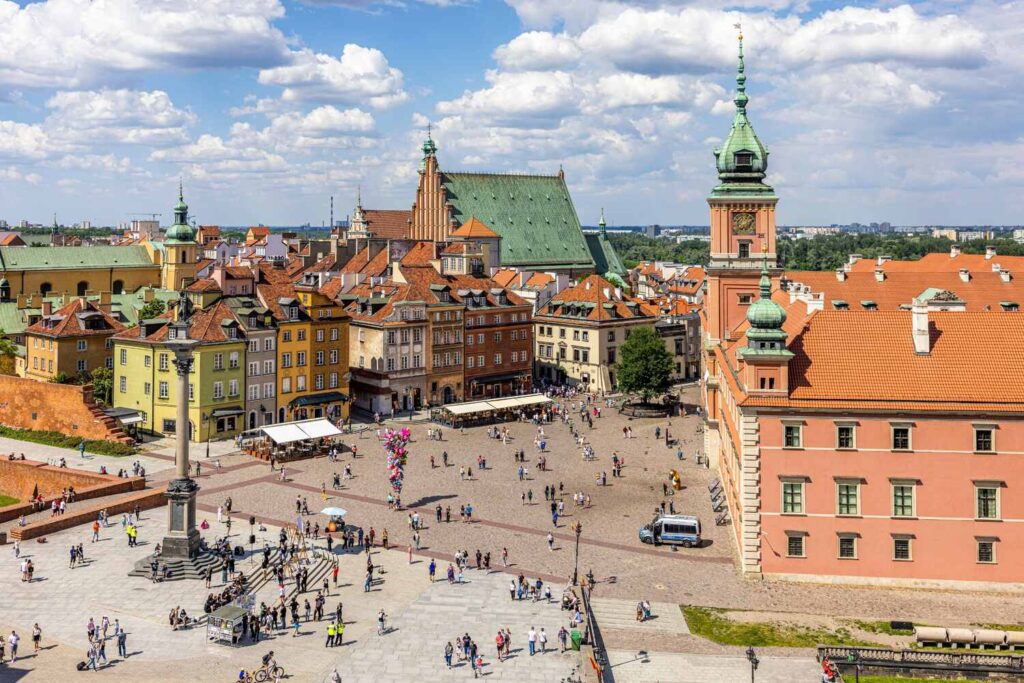
Wander Around Warsaw Old Town
Look down at the pavement and you’re stepping on stones first laid in the 1200s. Look up and it’s pure colo. Rows of green, yellow, and salmon-pink townhouses stacked side by side.
Cafés hide under the arches, ready with espresso and cake. Chain stores sit next door to mom-and-pop boutiques, and the mix somehow works. Snap a photo, sip your coffee, then duck into a shop for a quirky postcard. No rush.
The blend of medieval bones and modern buzz keeps you busy for hours without ever feeling like you’re ticking boxes.
In summer, it’s all about street festivals and outdoor events. Winter? Christmas lights, food stalls, and that cozy holiday energy. No matter when you visit, Warsaw Old Town gives you a solid first impression of the city, probably the one you’ll remember most.
Want the easiest way to get around? Join a walking tour. They’re cheap, easy to book, and you’ll see way more than if you wander solo.
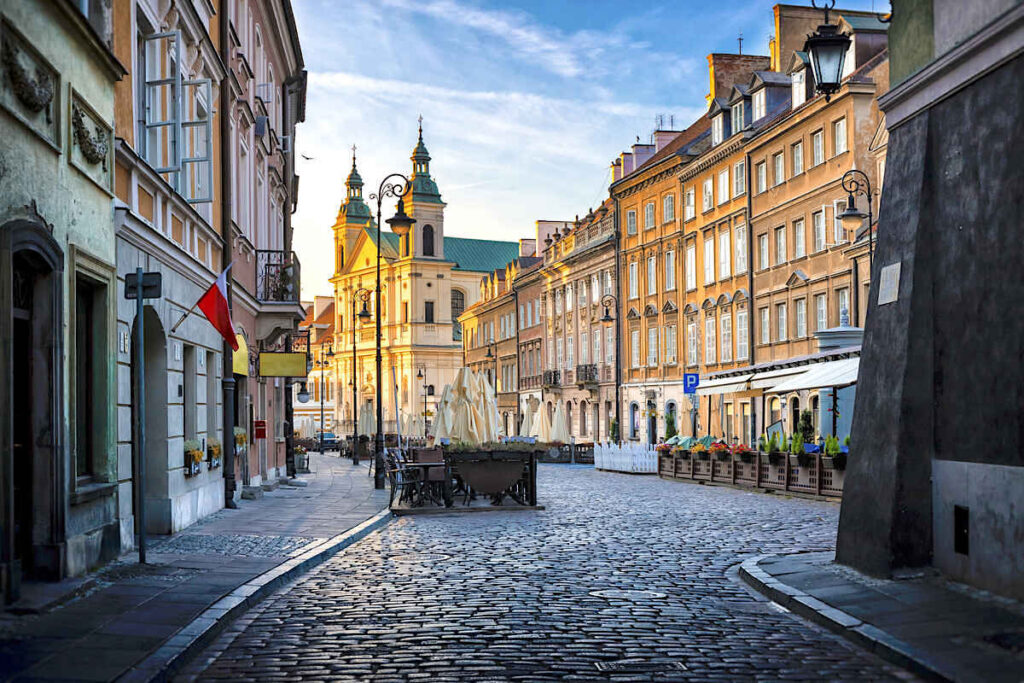
Pass by Warsaw Royal Route
When Warsaw officially became the capital in 1596, it inherited more than just power and politics — it took over Krakow’s coronation tradition too. That’s how the Royal Route came to be: a ceremonial stretch from the Royal Castle down to Wilanów Palace, used by every newly crowned monarch.
The route runs for just under a kilometer, linking three standout palaces — the Royal Castle, Łazienki, and Wilanów. Along the way, you’ll pass some of the most important spots in the city: the Presidential Palace, the University of Warsaw, and the Church of the Holy Cross, where Chopin’s heart is kept.
It’s not just about the buildings though. The walk takes you through parks and green spaces that break up the city noise and let you slow down a bit.
It’s a route that blends architecture, history, and a love for art and culture. Just walk it and you’ll see.
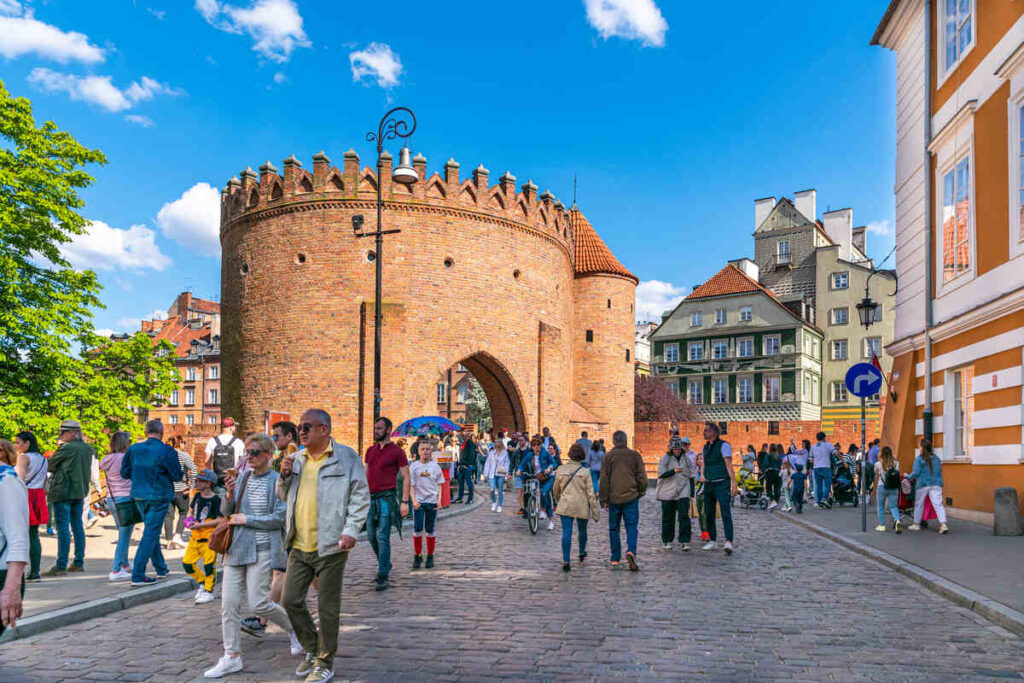
Photograph the Presidential Palace
When visiting Warsaw’s Old Town, be sure to stop by the Presidential Palace. Located on Krakowskie Przedmieście, the palace is a stunning example of neoclassical architecture and is one of the most iconic landmarks in the city.
Over the centuries, various modifications were made to the palace until its present day form was completed in 1818. Today, this regal place is used for state functions and continues to impress visitors from around the world with its architectural beauty.
A stroll through its grounds will leave you feeling like you’ve traveled back in time – so if you find yourself in Old Town Warsaw, make sure to include a visit to the Presidential Palace on your itinerary.
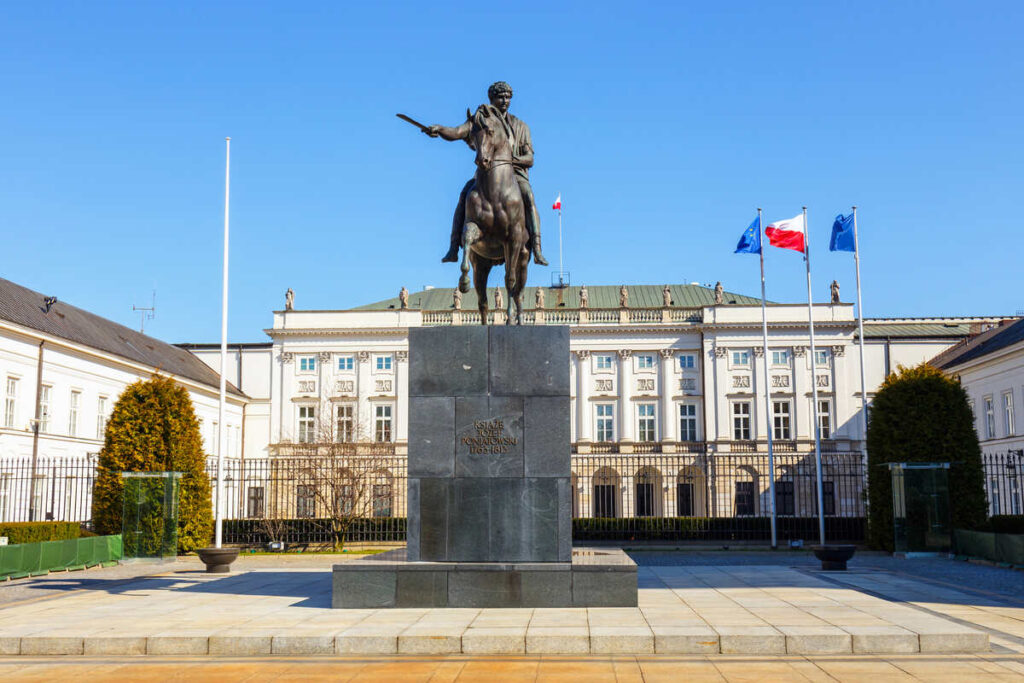
See the Royal Castle in Warsaw
One of the most historical places to visit in Warsaw is the Old Town. Castle Square is situated just through the Krakow Gate in which you will find the historical seat of the Polish Monarchy, The Royal Castle. A great attraction for all visitors to the Old Town.
The castle is not only one of the things to do in Warsaw, Poland but it’s also an essential part of the city’s history to discover.
The castle is steeped in history and was built over seven centuries ago. In fact, the design has evolved in stages till the second world war when Germany invaded Poland and demolished much of the building itself.
After that, in 1980, Warsaw’s Royal Castle was registered as a UNESCO World Heritage Site and is certainly worth a visit when in Warsaw.
If you want a thorough visit of the castle and understand its history and learn more, why not join a guided tour? While it’s more expensive than just getting the admission ticket, you’ll learn everything about it, the monarchy in Poland, and much more.
Opening hours: 10:00 AM – 5:00 PM
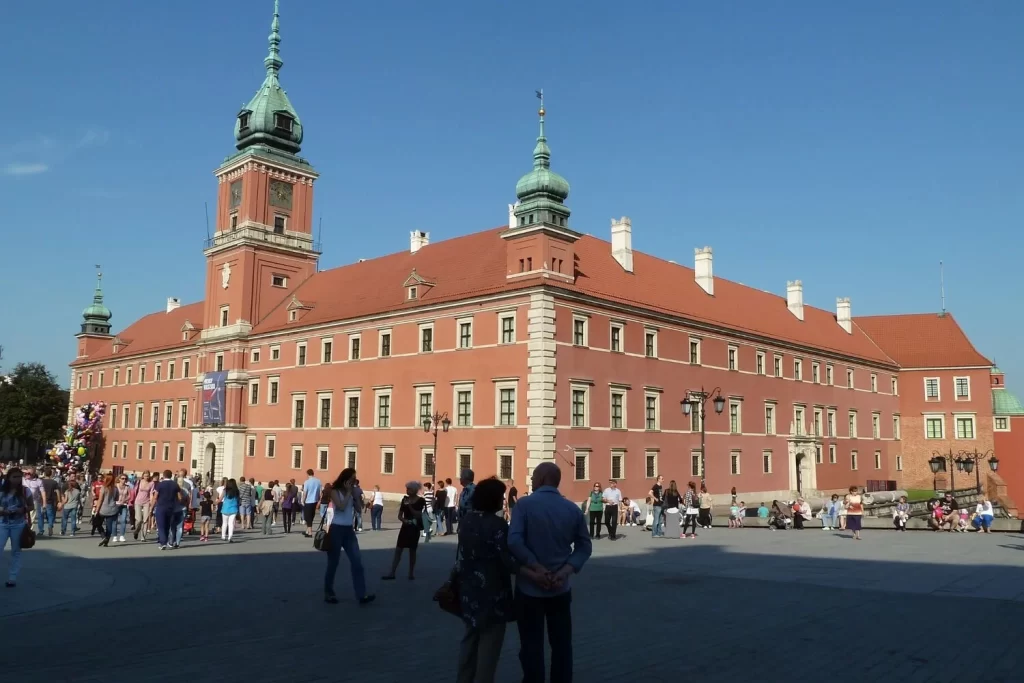
Explore Chopin Museum in Warsaw
Another of the must-see sights in Warsaw’s old town is the Chopin museum, located about 20 minutes from Warsaw Market Square in the city centre. The museum is dedicated to the life and work of Frederic Chopin, one of Poland’s most famous musicians.
The museum is located in a beautiful old building, and it houses a collection of Chopin’s manuscripts, letters, and personal belongings. There is also a performance hall where you can listen to recordings of Chopin’s music.
What’s really fun is that the museum isn’t just about looking at old things. They’ve got these interactive screens where you can listen to Chopin’s music and play around with it. It’s like having Chopin as your music teacher!
And it’s not just about staring at exhibits – they often have concerts and workshops. Imagine sitting in a cool, old castle listening to live piano music. It’s pretty awesome.
So, even if you’re not a huge fan of classical music, the Chopin Museum is a great place to visit and maybe discover something new.
While checking out the museum is very interesting, going to a Chopin Concert is even more – Listening to all the classics for an hour while taking in the unique experience in Warsaw.
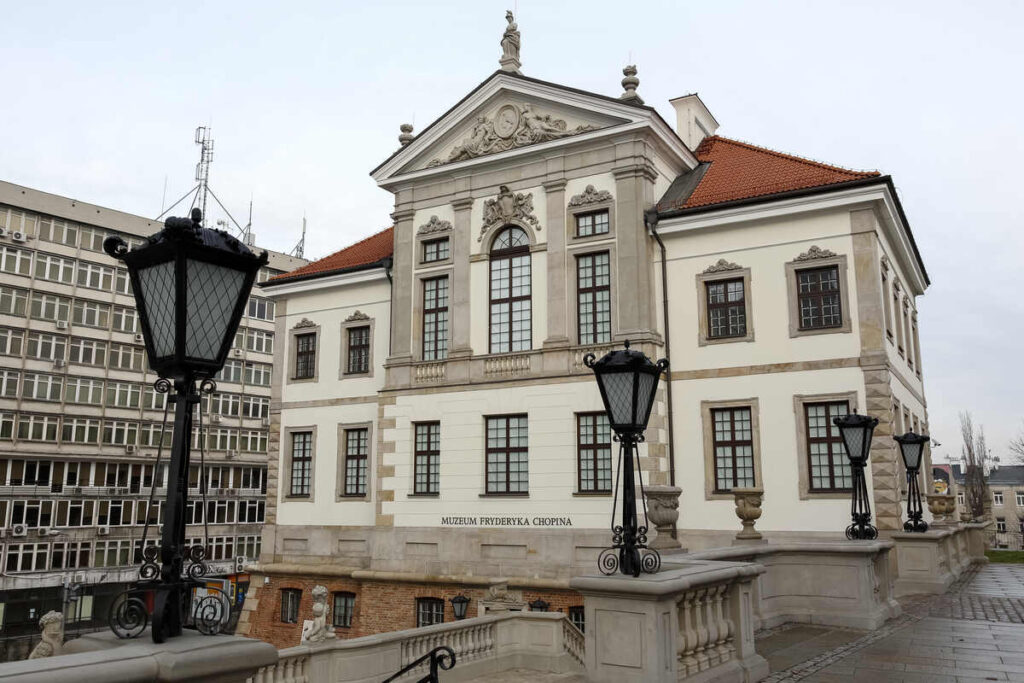
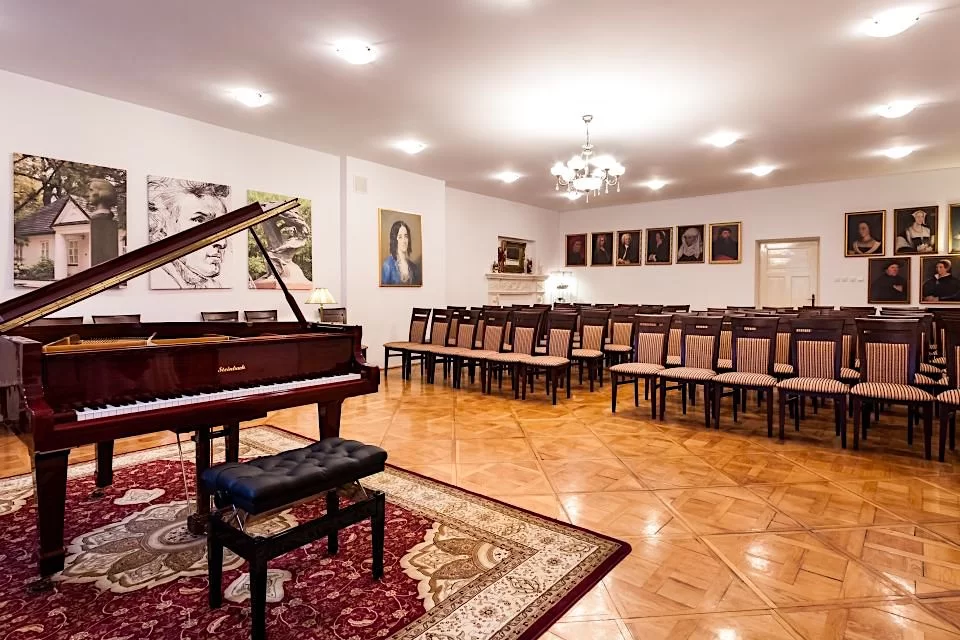
Enjoy Your Time at Castle Square
Here’s another must-do in Warsaw Old Town and you should definitely include it in your Poland itinerary. Marking the beginning of the Old Town, it works as an entrance to the best places to eat, to drink, and to do shopping in Warsaw.
Attracting tourists and locals alike, there’s everything you could want here. Symbolizing the move of the capital from Krakow to Warsaw, the square makes you understand this decision.
In addition to standing in the center of Poland, Warsaw has always been a city ahead of its time. In fact, this shows in the mix of languages, cultures, and time periods all present in the city. A 22-meter column stands in the center of the square – one of Warsaw’s oldest landmarks commemorating King Sigismund III Vasa.
To conclude, whether you’re visiting Poland for the first time or if you’re an expert, the square is definitely one of the best things to do in old town Warsaw.
Visit the POLIN Museum of the History of Polish Jews
The POLIN Museum of the History of Polish Jews is unlike any other in Warsaw. It came to life through a rare collaboration. National and local governments working together with a non-profit to build a space that honors a shared, complicated past.
This isn’t just a museum full of artifacts behind glass. It’s a modern, interactive cultural center that tells the story of Jewish life in Poland over the last 1,000 years. The everyday lives, the celebrations, the tragedies, and everything in between. It’s a space that invites reflection and conversation about Jewish history, Polish-Jewish relations, and what that means in today’s world.
The museum tackles tough topics head-on, including anti-Semitism, nationalism, and the stereotypes that still echo today. It’s a place built on values: openness, truth, and mutual respect.
If you’re serious about understanding Warsaw (or Poland as a whole) the POLIN Museum is a must. Just a heads up: it gets busy in summer. Booking tickets online ahead of time is a smart move.
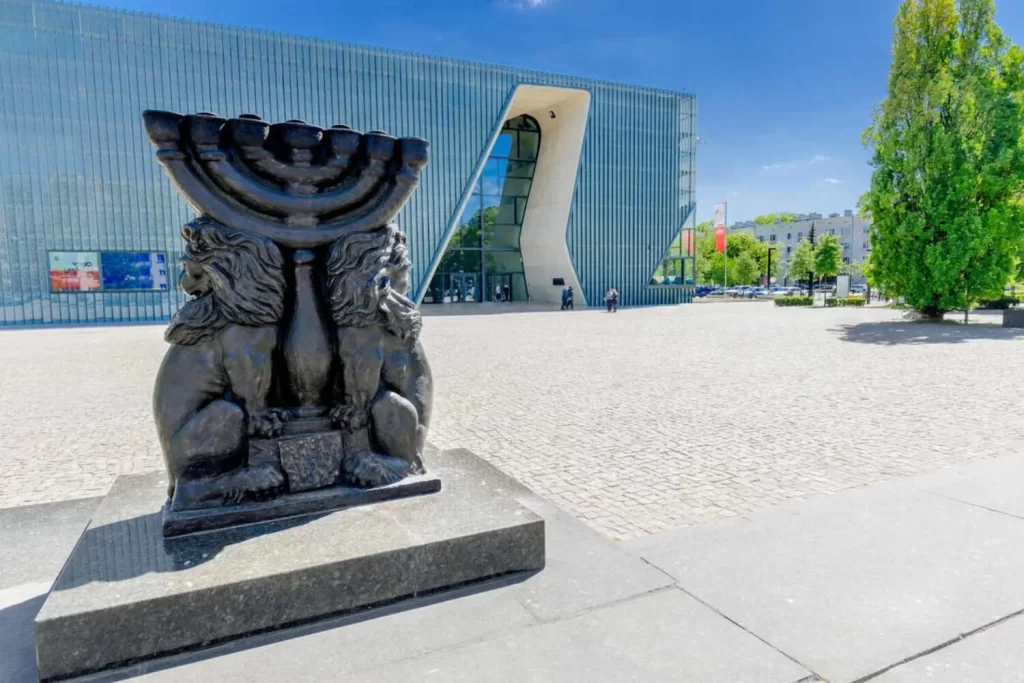
Free Jewish History Walking Tour
If you want to go deeper into Warsaw’s Jewish past, there’s a free walking tour that’s worth every step. Before World War II, Warsaw had the second-largest Jewish population in the world, right after New York. This tour takes you back to that time.
You’ll walk through areas that used to be the center of Jewish life: streets that once buzzed with synagogues, schools, and bakeries. Also, you’ll hear what life was like before everything changed. The guide does more than just recite facts; they tell stories that stay with you.
It’s not always easy history. A lot of it is heartbreaking. But if you want to understand Warsaw on a deeper level, this tour gives you the perspective that many miss. It’s run by Walkative, and it’s one of the best free activities in the city.
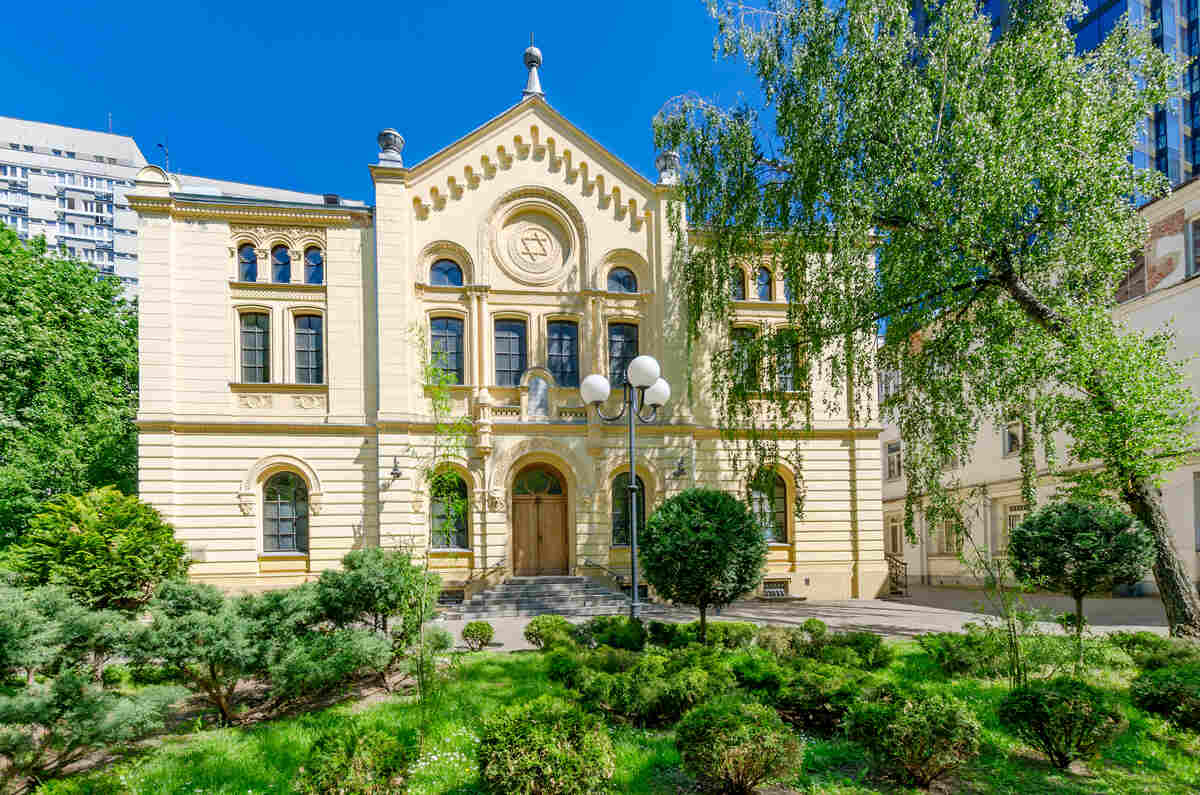
Take Some Photos at Warsaw Barbican
The Warsaw Barbican stands at the edge of Old Town, grabbing your attention with its bold red brick and fortress-like shape. It was built in 1540 to guard one of the main roads into the city. It didn’t see much action at first, as it was more show than defense. Still, it left a strong impression.
In 1656, during the Swedish invasion, it finally played its part in protecting the city. Then, centuries later, WWII nearly wiped it out. Crews rebuilt it in the 1950s, and today it’s one of the most photographed spots in Warsaw.
Now, the Barbican draws people more for the views and atmosphere than for military history. You’ll find a small museum inside, but most stop by to snap a few photos and enjoy the short walk from Castle Square. It’s an easy detour that adds a bit of edge to your Old Town visit.
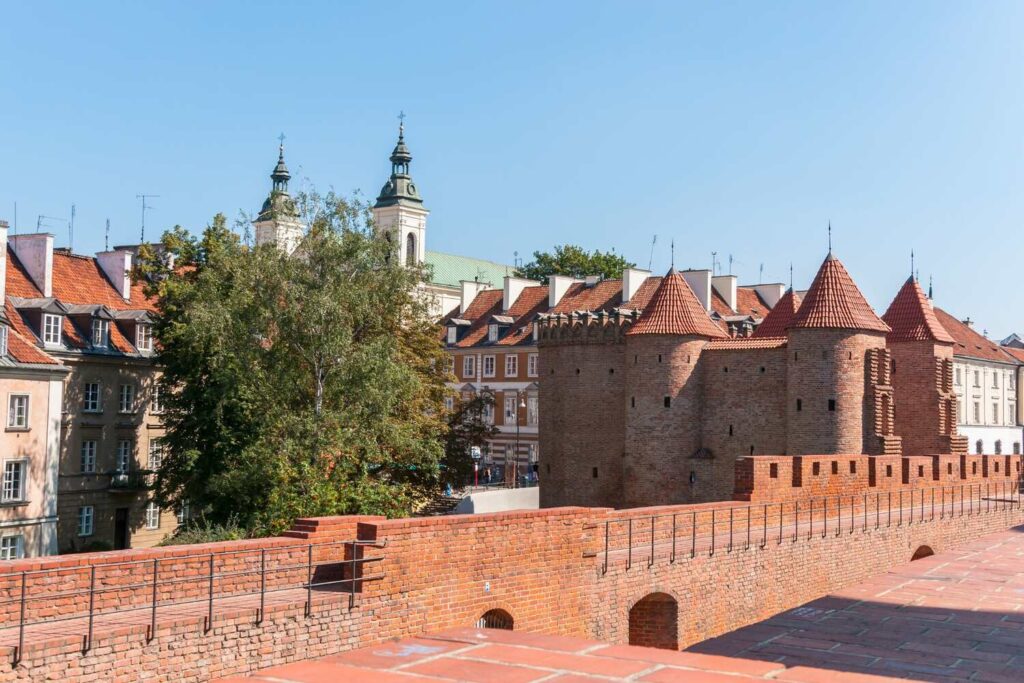
Visit the Magnificent St Anne’s Church
A vision in white and gold, the church of St. Anne marks the beginning of the Royal Route, giving the newly appointed monarchs the last blessing before the start of their reign.
Compared to other landmarks in Warsaw Old Town, the church is relatively new, its construction came to an end only in the late 18th century and the church was untouched during World War II.
You can climb the 148 steps to the bell tower, offering a bird-eye view of Warsaw; it seems that Warsaw will never stop surprising you with its beauty, so head over to St Anne’s Church to make the most of it!
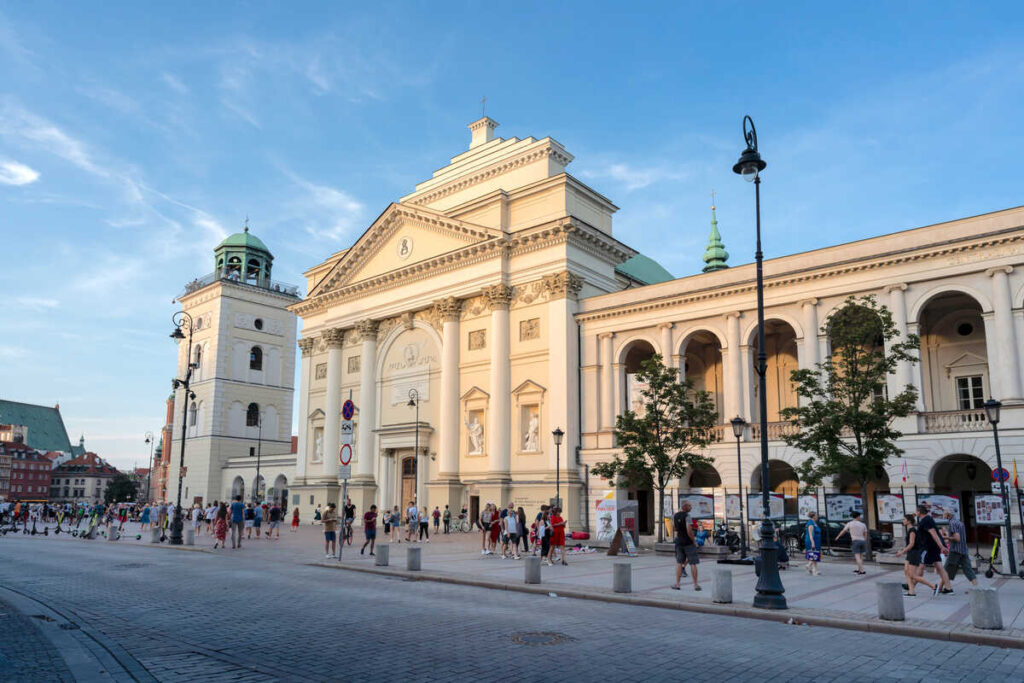
Have a Polish Food Feast
This is very much underrated activity to add to your Warsaw itinerary, but it’s a must-do for several reasons.
First of all, you’ll discover the best Polish dishes – With 10 dishes, you definitely will find your happy plate. Then, a Vodka tasting session is included, so that you get your first try (or not!) at a traditional bottle.
Also, you’ll get to spend some time with other travelers, and believe me, this is much more fun than you can imagine!
I’ll give some more restaurant recommendations in this Warsaw itinerary, but this is the best starting point for your trip, and that’s why we recommend it for your first lunch in town.


Enter Warsaw’s Carmelite Church
The Carmelite Church is most noted for its neoclassical style facade and was built in 1761-1783. An 18th-century artist, Szyon Czechowicz came to embellish the church with his paintings.
On the other hand, a fellow Polish Painter, Franciszek Smuglewicz, created the alter paintings. The Church is one of the most beautiful churches in Warsaw, and one of which the Polish people are most proud of.
The exterior of the building features a Polish design and, together with the gilded exterior and interior artifacts, is both impressive as it is awe-inspiring.
To sum up, if you want to swap the main attractions for one of the authentic things to do in Warsaw Old Town, the Carmelite Church is your answer.
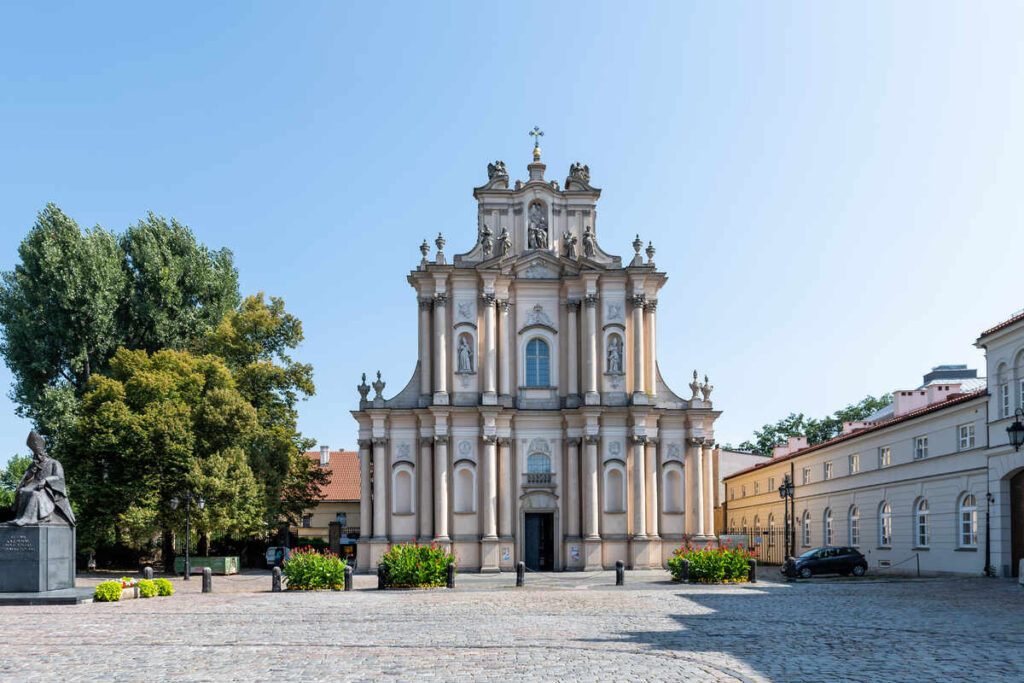
Discover Warsaw Wilanow Palace
There seems to be no end to the number of palaces in and around Warsaw. But Wilanów Palace Warsaw is by far one of the most beautiful and striking of them all. The masterpiece was made by Polish King Jan III.
It is painted all over in the perfect shade of lemon and has neoclassical architecture and color. Even though it is farther from the center of the city, it is well worth the trip.
You can go back in time to when Poland was ruled by royalty and feel like a queen as you walk through the beautiful rose gardens. Here’s a look inside Warsaw’s Wilanów Palace.
In case you want a private, comprehensive tour of the Wilanow Palace, which we highly recommend to learn everything about it, check out this one, with an expert guide.
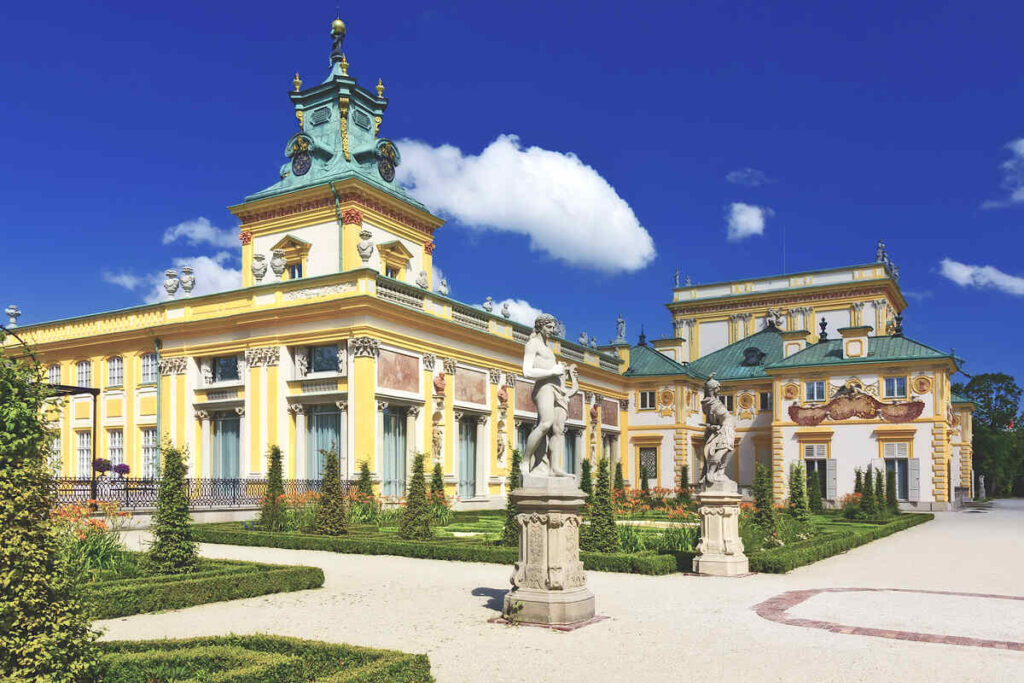
Warsaw Uprising Museum
Visit the Warsaw Uprising Memorial to learn more about the history of Poland’s fight for freedom. This landmark, located in a disused tram power plant in Wola, houses over a thousand artifacts dealing with the country’s history during and after the Nazi rule.
An additional highlight of the exhibit is Freedom Park, where the names of over 10,000 insurgents who lost their lives during the Warsaw Uprising are memorialized.
This exhibit has been deemed a “must-see” by previous tourists. Critics praised the property’s engaging, kid-friendly displays but warned that the building will be crowded and uncomfortable no matter the time of year.
Try getting a bite to eat at the café for a short break from the attraction’s crowds.
Make sure you get an audio guide for the museum for a mere 35 Polish zloty (about $9) to help you better traverse the museum’s perplexing arrangement.
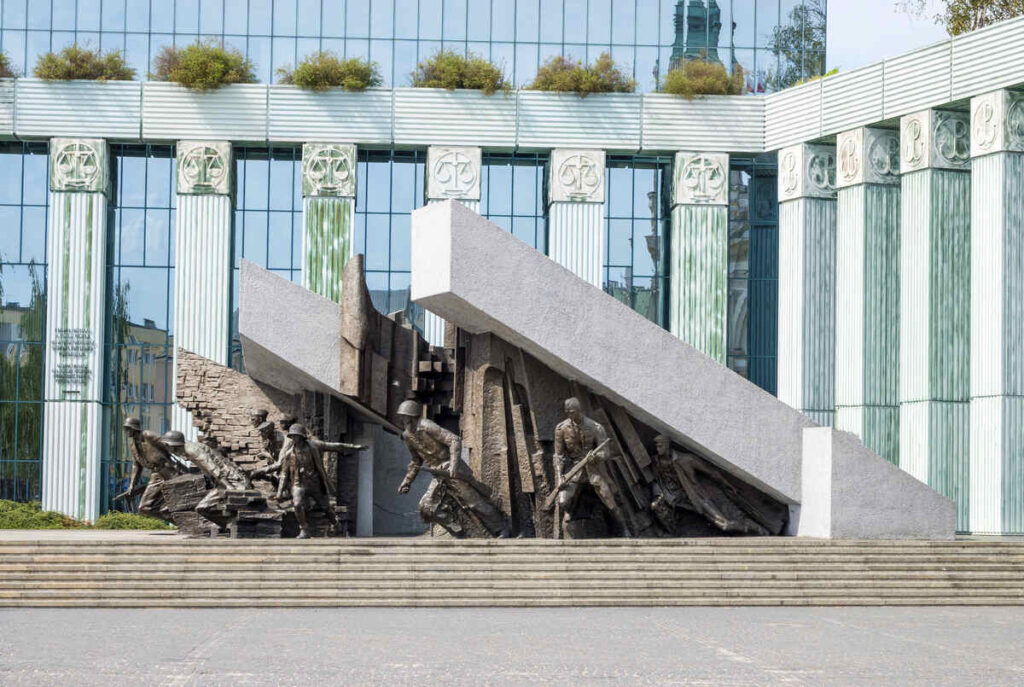
Tips For Visiting Warsaw Old Town
Now that you know all the best things to do in Warsaw Old Town, let’s discuss some tips you should know when visiting, as well as the accommodation options in town and the best tours you can join.
Best Day Tours from Warsaw
In case you have more than 3 days in Warsaw, or your schedule is flexible, here are some excellent day trips you can take, which are sure to make your trip even more unique.
Auschwitz-Birkenau Full-Day Tour by Car
Get on a profound day trip from Warsaw to the Auschwitz-Birkenau Concentration Camp. This 13-hour day tour, including hotel pickup and drop-off, takes you to one of the most significant sites of World War II.
A knowledgeable guide leads you through the camp, where you’ll learn about the harrowing history of the Holocaust. See the remnants of the genocide, including the notorious chambers and barracks.
The tour emphasizes the importance of remembering the Holocaust and honors the memory of those who perished inside the concentration camps. While this is indeed a sad day out, it’s one activity we couldn’t recommend enough.
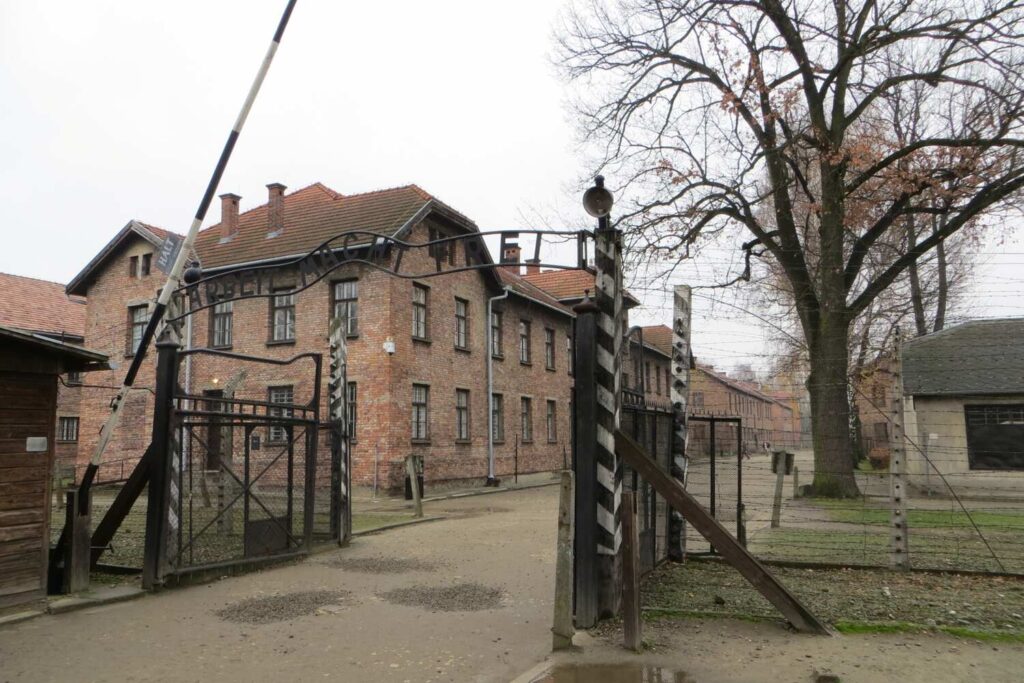
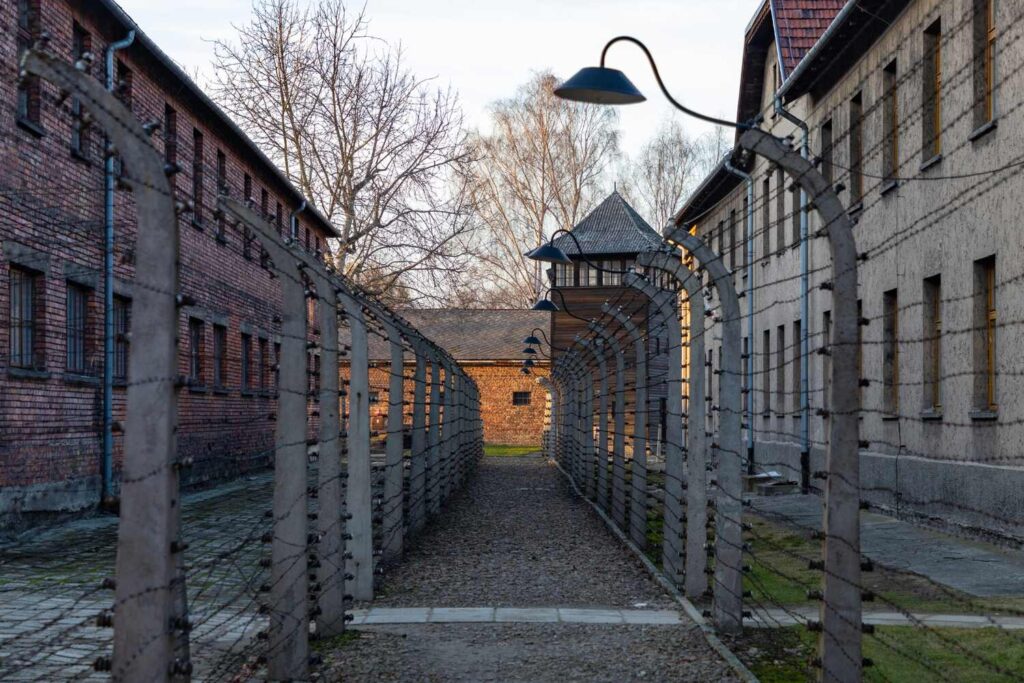
Majdanek Concentration Camp & Lublin Full Day Tour
This full-day private tour from Warsaw combines a visit to the Majdanek Concentration Camp with an exploration of Lublin, a city rich in history and culture.
Majdanek remains one of the best-preserved Nazi camps, offering an insightful look into the Holocaust. The tour includes a walk through the camp, viewing barracks, gas chambers, and the famous, massive monument.
Afterward, enjoy the historical Lublin, wandering through its cobbled streets and majestic buildings. This tour blends the solemn history of Majdanek with a tour of Lublin, providing a comprehensive tour from Warsaw.
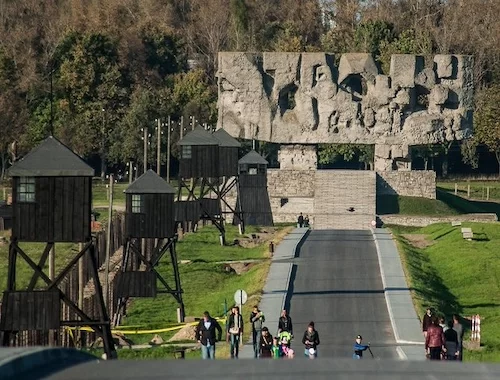
Wolf’s Lair Private Day Trip from Warsaw
The Wolf’s Lair day trip from Warsaw takes you to Hitler’s main WWII headquarters, a site nestled in the forests of Northern Poland.
This private tour includes a comfortable car journey, entrance fees, and lunch. Explore the ruins of bunkers used by key Nazi figures, adding a tangible dimension to your understanding of history.
The tour also includes stops at other significant sites like the Mamerki bunkers, Swieta Lipka Sanctuary, and the Castle of Reszel, offering a broader perspective on the region’s wartime history.

Where to Stay in Warsaw
Warsaw offers solid accommodation options for every budget, whether you’re traveling light or treating yourself to something fancy. And the best part?
Most top-rated places are within easy reach of Old Town, museums, restaurants, and public transport. Here’s a breakdown to help you choose what fits your style.
Luxury: The Westin Warsaw
If you’re after comfort and convenience, The Westin Warsaw delivers both. Right in the city center, this upscale hotel features floor-to-ceiling windows with sweeping views of Warsaw’s skyline and stylish rooms equipped with the signature Heavenly Bed.
You can grab a bite at Fusion Restaurant or relax at JP’s Café & Bar. There’s also a modern fitness center, sauna, and massage service on-site. Saxon Garden is just a short walk away, and the Old Town is less than 2 kilometers from the front door. Close enough for a stroll, far enough to avoid the crowds.

Mid-Range: Holiday Inn Warsaw City Centre
Holiday Inn Warsaw City Centre hits that sweet spot between price and comfort. The rooms are modern and well-equipped, and kids under 12 eat free, which is a nice bonus for families.
There’s an in-house restaurant, bar, lounge, and gym, plus 24-hour front desk service and room service if you want to keep it simple.
You’ll find yourself within walking distance of the Warsaw Uprising Museum and Złote Tarasy Shopping Centre, and public transport is right nearby if you’re heading toward Old Town or elsewhere in the city.
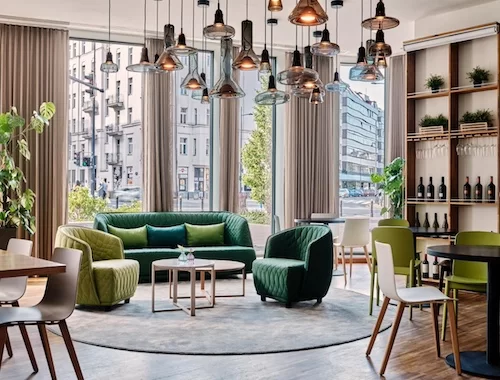
Budget: Oliwka Hostel
For budget travelers, Oliwka Hostel is a central, no-frills option that keeps things affordable without cutting too many corners. You get access to a shared kitchen, lounge area, and multilingual reception staff who speak English, Polish, Russian, and Ukrainian.
The hostel is a short walk from landmarks like the Zacheta National Art Gallery, Warsaw University, and the Grand Theatre. It’s simple, clean, and practical. All in all, ideal for anyone just looking for a place to sleep in the city center without blowing the budget.
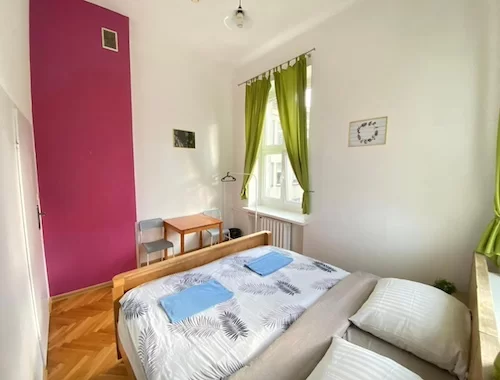
Conclusion: Warsaw Old Town
If you’re visiting Warsaw, make sure Old Town is at the top of your list. This part of the city is more than just pretty buildings, it’s living proof of resilience, rebuilt almost entirely from rubble after WWII.
You can grab a coffee in a centuries-old square, explore hidden alleys full of charm, or just sit back and people-watch while street musicians play nearby. It’s got history, energy, and those little moments that stick with you long after your trip ends.
So as you plan your days in Warsaw, carve out time for Old Town. It’s the kind of place that makes a trip feel unforgettable.
